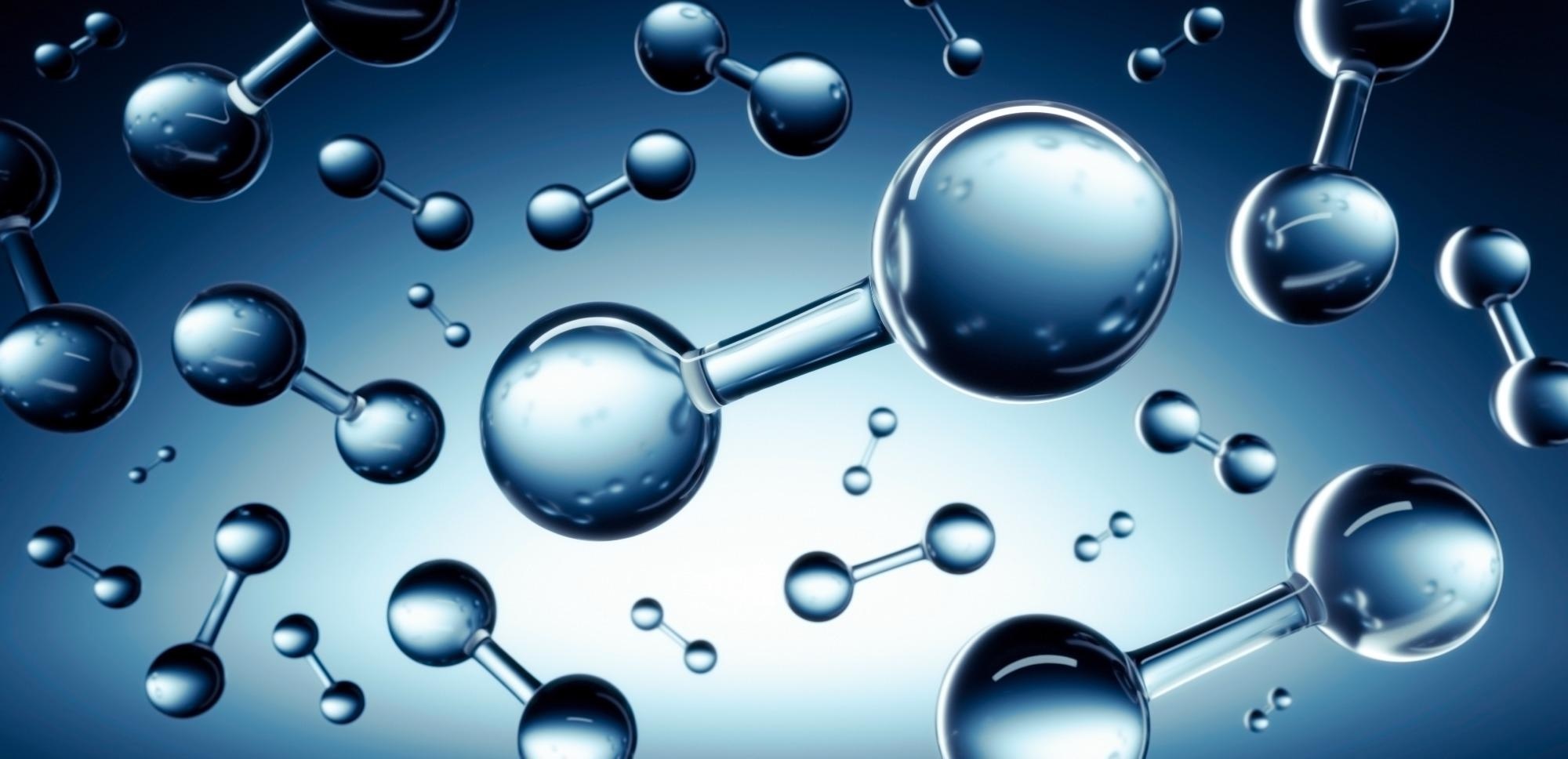
Image Credit: Shutterstock.com / peterschreiber.media
A newly devised nanorod catalyst could help water splitting by sunlight become a viable and eco-friendly route to hydrogen fuel.
Humanity’s consumption of fossil fuels drives massive detrimental changes to the environment, releasing carbon dioxide and other greenhouse gases into the atmosphere that are fueling the climate change crisis. Thus, a long-term sustainable alternative fuel source that is environmentally friendly is desperately needed.
One possible alternative for fossil fuels that has been proposed by researchers for some time is hydrogen (H2). The Universe’s most abundant element, hydrogen, is a high-energy-density molecule, and when it is used as a fuel, it produces only water as a by-product — making it a clean alternative to fossil fuels too.
Yet, despite these positive points, there’s a hitch associated with the use of hydrogen as a fuel.
Whilst the combustion of hydrogen to produce energy and water is eco-friendly, the production of hydrogen itself isn’t so beneficial to the environment. There is an eco-friendly way of creating hydrogen, though. Sunlight can be used to split water and liberate hydrogen, but this isn’t energy-efficient, suffering because of the low stability of the material that catalysizes the reaction — the photocatalyst.
Now an international team of researchers thinks they may have hit upon a solution to this problem. The scientists, led by Assistant Professor Yeonho Kim from Incheon National University in Korea, believe they may have created a stable and efficient photocatalyst to assist sunlight in splitting water and freeing hydrogen.
In a paper published in the journal Applied Catalysis B: Environmental, the team discusses their newly developed catalysts and their impressive results.
Improved Hydrogen Production and Stability
The method the team has developed hinges upon the use of polydopamine (PDA)-coated zinc sulfide (ZnS) nanorods as a photocatalyst as opposed to the ZnS material currently used to catalysize the process.
“ZnS has various photochemical applications because it can rapidly generate electric charge carriers under sunlight,” Kim explains. “However, sunlight also causes oxidation of sulfide ions leading to photocorrosion of ZnS.”
The researchers found that when they used the PDA ZnS nanorods in the water-splitting process it yielded a staggering 220% increase in hydrogen production when compared to the yield produced by the same process catalysized by a ZnS catalyst. In addition to this, the team found that after being exposed to sunlight for 24 hours their catalyst retained almost 80% of its catalytic capabilities.
Recently, studies showed that controlled-thickness PDA coatings on a photocatalyst can improve conversion efficiency for solar energy and enhance photostability. But, so far, no study has addressed the physicochemical changes at the interface of ZnS/PDA. Therefore, we wanted to study the effect of PDA binding on the photocatalytic performance of ZnS.
Yeonho Kim, Assistant Professor, Incheon National University, Korea
Wider Applicability
The researchers tested 3 prototype catalysts that varied in PDA thickness — ranging from 1.2 nm to 3.5 nm — to find which had the greatest photocatalytic performance. This was achieved by measuring how much hydrogen they caused the water-splitting process to produce whilst exposed to simulated sunlight.
This testing demonstrated that the ZnS nanorod with the thinner PDA covering — which the scientists dubbed — ZnS/PDA1 produced the most hydrogen. In terms of performance, this was followed by ZnS/PDA2 with a 2.1 nm PDA coating, and then an uncoated nanorod. The nanorod with the thickest coating performed the worst in the testing, catalysizing a reaction that yielded the least hydrogen.
The team believes that the thicker coatings suffered in performance terms because the PDA coating absorbs a little sunlight — thus, the thicker the coating, the less light that reached the ZnS core, thus impeding the reaction.
The researchers also set about discovering how the arrangement of electrons — the electronic structure — in the improved catalyst affects its performance. Their analysis revealed that the enhanced light absorption was due to the formation of zinc oxide (ZnO) and Zinc oxysulphide (ZnO,S) nanoparticle shells on the ZnS nanorod.
This ultimately resulted in a ‘doubly staggered’ electronic arrangement that assists the transport and separation of charge carriers like electrons across the surface of the nanorod. The electronic structure also meant a reduced oxidative capacity, massively boosting durability.
“The polydopamine coating utilized in our work is also applicable to other groups of selenide, boride, and telluride-based catalysts,” concludes Kim, indicating that the catalyst could have a wide range of applications.
Reference
1. Kim. Y., Coy. E., Kim. H., et al, [2021], Applied Catalysis B: Environmental, [https://doi.org/10.1016/j.apcatb.2020.119423]
Disclaimer: The views expressed here are those of the author expressed in their private capacity and do not necessarily represent the views of AZoM.com Limited T/A AZoNetwork the owner and operator of this website. This disclaimer forms part of the Terms and conditions of use of this website.